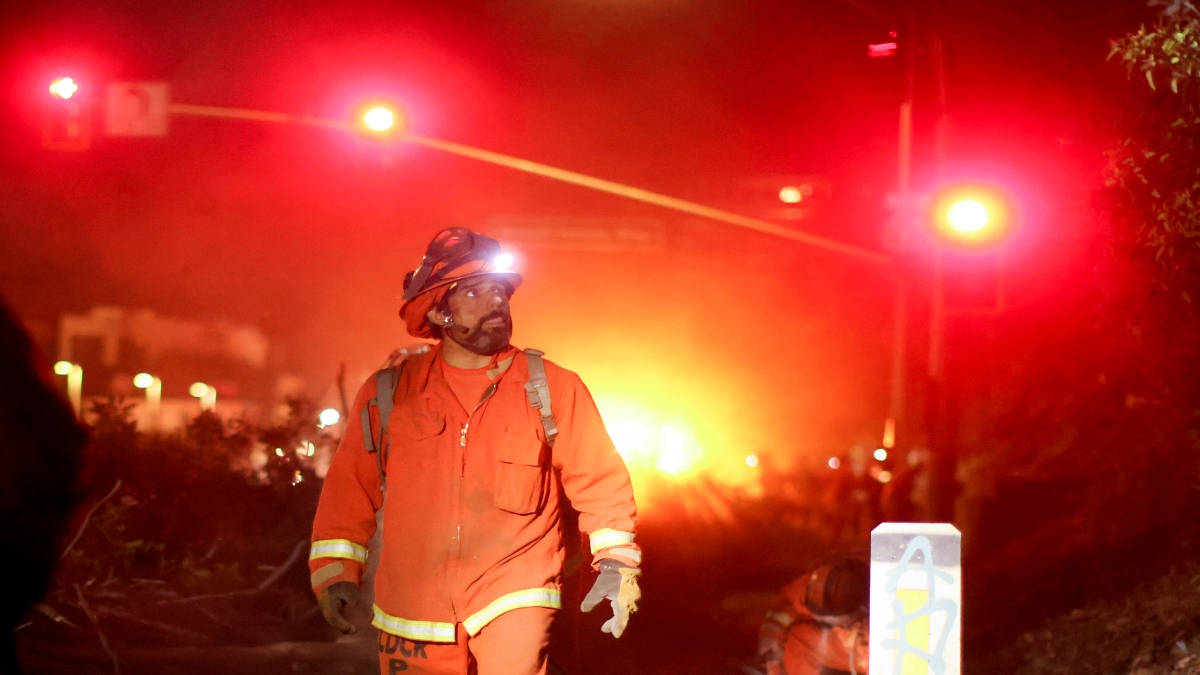The devastating wildfires that are sweeping Los Angeles could push home insurance companies to leave California, despite new regulations meant to keep them, according to news website Semafor, citing the state’s former top insurance official.
At least two major fires are still burning largely out of control, fueled by strong winds, resulting in 25 deaths. Over 12,000 homes have been destroyed by the wildfires that started sweeping through the Greater Los Angeles area last Tuesday. The damage includes everything from multimillion-dollar ocean-view mansions to modest homes that once welcomed returning World War II veterans.
Initial estimates indicate these fires could be the most expensive in US history, with insured losses reaching up to $30 billion and total economic losses potentially hitting $150 billion, reported Semafor.
The fires have forced as many as 200,000 people from their homes. Some 82,400 people were under evacuation orders and another 90,400 faced evacuation warnings as of Wednesday.
Some 8,500 firefighters from the western United States, Canada and Mexico have kept the growth of the fires in check for three days.
Talking about California wildfires, Dave Jones, state’s former insurance commissioner, said it was “never a question of if, but when” California would face fires like these.
“The fires shouldn’t be a pretext for the insurers to renege on their commitment to start writing again in California,” Semafor quoted Jones as saying, adding, “but they might anyway.”
Impact Shorts
More ShortsWildfires are not the only issue.
According to the Semafor report, citing a research by Susan Crawford, a senior climate fellow at the Carnegie Endowment for International Peace, realistically pricing the risk of floods and fires could lead to a loss of nearly $3 trillion from the $46 trillion value of the US housing market.
To help maintain the stability of the housing market, she argues that flood insurance must improve and become more widely available. This begins with enhancing FEMA’s future flood maps, a project that could be at risk if the incoming Trump administration goes forward with plans to reduce federal climate science efforts, added the report.
Jones highlighted that it might be difficult to justify allowing insurers to raise rates, given that California’s insurance companies have consistently made healthy profits in nearly every year over the past decade.
He pointed out that the current fires are unlikely to bankrupt any private insurers in the state because they are legally required to maintain cash reserves during less catastrophic years. However, he believes the fires do provide a valid reason for insurers to request higher rates.
“Now they have this direct experience they can build into their catastrophe models,” he was quoted as saying.
“And insurance rates are one of the only price signals we have going in the economy now to say hey, climate change has real risks. For now we continue to have this insatiable appetite to shove more businesses and people into harm’s way,” he added.
Jones warned that flood insurance serves as a cautionary example for areas at risk of wildfires.
About 50 years ago, private insurers realised they couldn’t profit from flood insurance, leading the federal government to intervene. The National Flood Insurance Program has struggled since its inception, as subsidised insurance has encouraged risky development and left taxpayers — many of whom don’t own homes in vulnerable areas — shouldering significant costs. Instead of creating a federal wildfire insurance plan, Jones said, he believes private rates should reflect actual risks.
For risks insurers want to avoid, FAIR plans could help, but they would need some federally subsidised reinsurance to remain viable and affordable, while still offering discounted rates for low-income households, he added.
Jones emphasised that the US housing market cannot fully insulate itself from danger. Eventually, rising premiums will reach a point where home buying will come to a standstill.
He said that Florida has already tried similar policy changes to those in California to prevent insurers from leaving the hurricane market, but they continue to exit. The only real solution, he said, is to slow down climate change.
“We’re marching steadily towards an uninsurable future because we’re not transitioning from fossil fuels,” he was quoted as saying. “Florida’s Exhibit A for where we all may be going in the long term,” he added.
With inputs from agencies
)